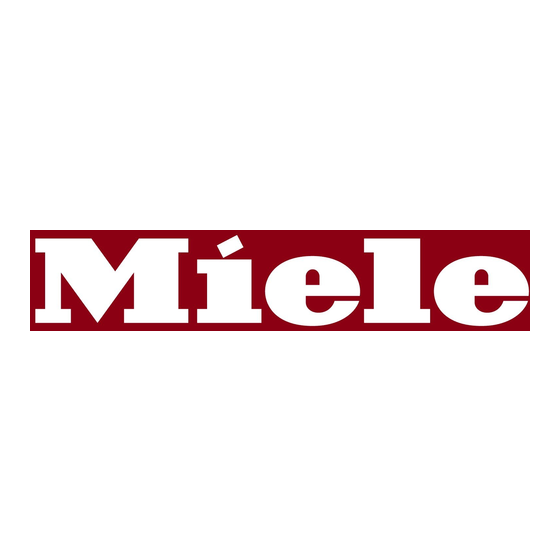Miele K 11820 SD 작동 및 설치 지침 - 페이지 12
{카테고리_이름} Miele K 11820 SD에 대한 작동 및 설치 지침을 온라인으로 검색하거나 PDF를 다운로드하세요. Miele K 11820 SD 44 페이지. Refrigerator with dynamiccooling
Miele K 11820 SD에 대해서도 마찬가지입니다: 운영 및 설치 매뉴얼 (48 페이지), 작동 및 설치 지침 (48 페이지)

How to save energy
Installation
Temperature setting
with a thermostat which
is approximate
(set in stages).
Temperature setting
with a thermostat which
is exact to the degree-
(digital display).
Use
Defrosting
12
Normal energy consumption
In a ventilated room.
Protected from direct sunlight.
Not situated near a heat source
(radiator, oven).
Where the ideal ambient room
temperature is approx. 20 °C.
Do not cover the cross-section of
the air inlet and outlet and keep free
of dust.
With a medium setting of 2 to 3.
Storage section 8 to 12 °C
Refrigerator section 4 to 5 °C
PerfectFresh zone just above 0 °C
Freezer section -18 °C
Wine storage section 10 to 12 °C
Do not change the arrangement of
the drawers and shelves.
Only open the doors when
necessary and for as short a time as
possible.
Store food in an organised way.
Allow hot food and drinks to cool
down before placing them in the
appliance.
Store food covered or packaged.
Place frozen food in the refrigerator
to defrost.
Do not overfill the appliance to allow
air to circulate.
Defrost the freezer compartment
when a layer of ice 0.5 cm thick has
built up.
Increased energy consumption
In an enclosed, unventilated room.
In direct sunlight.
Situated near a heat source
(radiator, oven).
Where there is a high ambient room
temperature.
With a high setting: the lower the
temperature in the compartment, the
higher the energy consumption.
On appliances with winter setting,
please make sure that the winter
setting is switched off when the
ambient temperature is warmer than
16 °C.
Frequent opening of the doors for
long periods will cause a loss of
coldness.
If food is not stored in an organised
way, searching for an item will mean
the door is open for longer.
Placing hot food in the appliance
will cause the compressor to run for
a long time, as the appliance will
have to work harder to lower the
temperature.
The evaporation or condensation of
liquids will cause a loss of coldness
in the refrigerator.
A layer of ice hinders the cold from
reaching the frozen food, and
causes an increase in energy
consumption.
